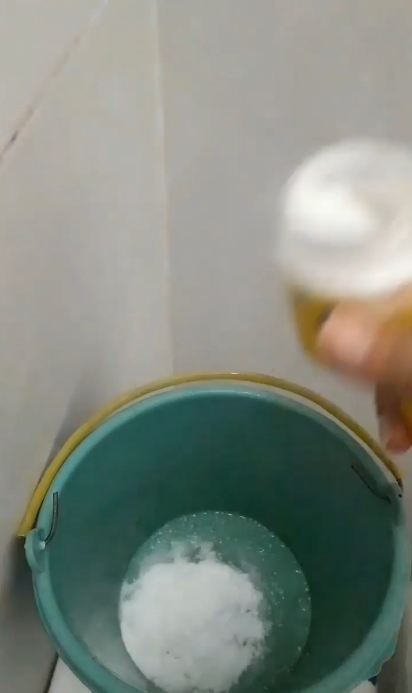Instagram/@mariantimamengko
Brilio.net - In the world of buildings, grout is an important material for filling gaps between ceramic tiles on floors or walls. Well, this grout also functions to produce square lines that will limit the ceramic. Ceramic grout is also an important part of the bathroom which functions as a wall and floor coating to protect the structure beneath from moisture and water.
Unfortunately, over time, exposure to water and dirt can make ceramic grout dirty. In fact, not infrequently, the appearance of ceramic grout turns yellow. Yellow crust is usually caused by a buildup of minerals from water used for bathing or washing in the bathroom. Not only that, soap residue and dirt can also stick to it and make the crust worse.
The yellow condition of the ceramic grout certainly makes the overall appearance of the bathroom less attractive. Therefore, you need to remove the yellow crust. Luckily, there is an Instagram user @mariantimamengko who once shared a trick for removing grout from bathroom ceramics through one of the uploaded videos.
Reported by BrilioFood from the Instagram account @mariantimamengko on Monday (22/4), there are a number of simple ingredients used to remove yellow crust on bathroom ceramic grout.
Tricks to remove yellow crust from bathroom ceramic grout using 1 kitchen ingredient.
One of the ingredients even comes from the kitchen, such as baking soda. For other ingredients, he uses citrus powder.

photo: Instagram/@mariantimamengko
Method, first prepare 1 packet of citrus then pour it into a container. After that, mix with quite a lot of baking soda. Next, stir the two ingredients without needing to mix with water first. To make it easier, you can stir it with a brush. Now, if it is mixed well, this liquid is ready to use.

photo: Instagram/@mariantimamengko
You can directly apply this mixture of citrus and baking soda to yellow crusty ceramic grout. After smearing it evenly, let it sit for 15 minutes so that the citrus and baking soda can soak into the ceramic grout.
If you let it sit, usually the yellow crust will fade by itself. However, if there are still parts of the grout that look yellow, you can scrub them again with a brush or brush. Finally, rinse thoroughly with running water.

photo: Instagram/@mariantimamengko
Well, the ceramic grout that has been cleaned looks shinier and whiter. That way, the appearance of the bathroom looks clean as a whole. This shows that a mixture of citrus and baking soda is very effective for removing stubborn stains, such as yellow crust on bathroom ceramic grout.
How about it, it's quite easy, right? This upload from the Instagram account @mariantimamengko immediately attracted the attention of netizens. This can be seen from the number of viewers who have reached 4,000 views on Instagram.
View this post on Instagram
How to find out if baking soda is still active.
To find out whether baking soda is still active or not, you can do the following simple methods.
1. Test the reaction with vinegar.
Mix a little baking soda with a little vinegar in a glass or small bowl. If the baking soda is still active, a foamy reaction will occur and emit carbon dioxide gas.
2. Test the reaction with water.
Mix a little baking soda with a little water. If the baking soda is still active, a foaming reaction will occur.
3. Test the reaction with hot water.
Mix a little baking soda with hot water. If the baking soda is still active, a fairly strong foaming reaction will occur.
4. Test the expiration date.
If baking soda is still stored in its original packaging, check the expiration date listed. Baking soda can generally last up to 2 years if stored properly.
5. Scent test.
Baking soda that is still active will have a fresh, slightly lye-like aroma. If the baking soda looks cooked or has no aroma, it may no longer be active.
6. Test for acid content.
If you have litmus paper or pH paper, you can dip it in a baking soda solution. If the paper turns blue, the baking soda is still active.
7. Hardness test.
Baking soda that is still active will feel soft and crumble easily when crushed. If the baking soda feels hard and difficult to crush, it may no longer be active.
8. Dough rising test.
If you use baking soda to make bread or cake dough, see if the dough rises well. If not, the baking soda may no longer be active.
9. Taste test.
Baking soda that is still active will provide a fresh and clean taste when mixed with an acidic liquid such as vinegar or lemon juice. If the baking soda is no longer active, it may give an unpleasant or bland taste.
(brl/lut)